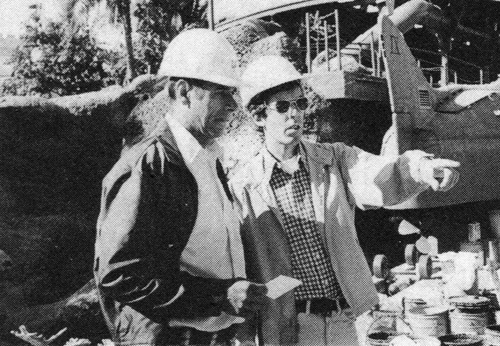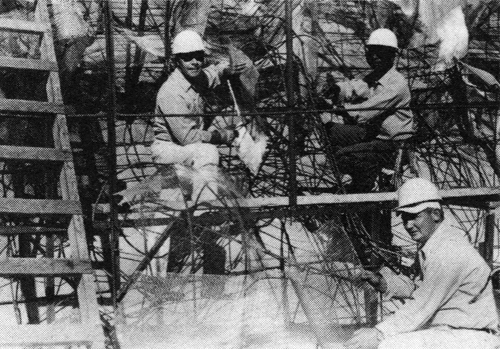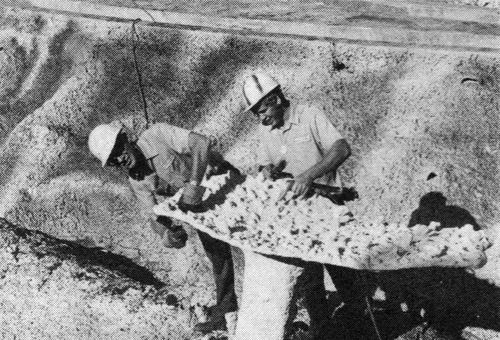In the frantic rush to open Walt Disney World in October 1971, a variety of “t”s and “i”s were left uncrossed and undotted. These ranged from a nearly empty Tomorrowland to unfinished resort hotels, not to mention a roster of incomplete attractions which were rolled out over subsequent months and years.
This second wave of Magic Kingdom development was the company’s main thrust over the next five years, and led up to the completion of Tomorrowland and Space Mountain. But often lost in the historical shuffle is the fact that, around that same time, the classic 20,000 Leagues Under the Sea attraction received a massive overhaul. Perhaps it’s not surprising that this rehab has been forgotten, considering that it happened so early in the resort’s lifetime. It’s difficult to find quality documentation of the attraction at all, even from the 1980s and 1990s, and research is almost impossible if you’re depending on snapshots from crummy guest cameras from the first three years of the park’s operation.
But when you think about it, this must have been a critical rehab. After all, 20,000 Leagues was one of the park’s cornerstone E-ticket attractions – it was something featured in almost all of the park’s advertising imagery, and was one of the Magic Kingdom’s key moneymaking shows. Taking it down for a long overhaul so early in the park’s history indicates that it must have been a triage situation. One suspects that this rehab was their first priority once Space Mountain opened to draw off some of the crowds.
Helping guide this remodel was a young Tony Baxter, who has, of course, been in the news lately. His involvement in this project shows an early interest in the Victorian scientific romances that would guide his career through his unrealized masterpiece, Discovery Bay, to the Verne-inspired Discoveryland of Disneyland Paris.
Let’s see what the Eyes & Ears of Walt Disney World had to say about the project, back on December 5, 1975:
Whole New Look For “20K”
Now you’re probably sitting there wondering to yourself… what’s a “20K”? Just ask any veteran Disney employee and they’ll tell you, 20K is our lingo for Fantasyland’s “20,000 Leagues Under the Sea” attraction. A long-time favorite of our guests visiting the Magic Kingdom, the underwater adventure attraction was closed this past September for an extensive rehab, with a re-opening date set for “some time in the Spring of 1976” according to engineers working on it.
EYES & EARS visited the construction site and talked with Calvin Anderson, Superintendent of Project Supervisors for our Planning Department, and Don Mika, the Project Supervisor. Calvin explained that the entire attraction is undergoing a massive rehab, one involving such extensive changes as to almost be re-building the attraction. Don told us that after draining the 12 million gallon lagoon, work began on tearing out much of the old “rock” walls and animation. At the same time, the submarines were sent to the staff shops building a few at a time for rehabing, which is still being carried on at this writing.
Don Mika (l), the Project Supervisor, and Tony Barter (r), WED artist, discuss how highlights and shadows will be painted into the rock formations to add depth as well as beauty.
Then began the task of creating a whole new look of the underwater world of Capt. Nemo for our guests. “There are drastic changes being made in the animation,” Calvin told us. He went on to explain that about 95% of the old animation has been replaced with new, more life-like creations from WED, our design company in California. The old animation, which was water activated, is being replaced by animation which is activated by compressed air. And to keep the water crystal clear, the entire 12 million gallon lagoon is being converted to a closed filter system, like a swimming pool. Before, we continually pumped fresh water into the lagoon and let it run out the other side to keep it dear. Calvin said that to his knowledge, 20K will be the largest self-contained “swimming pool” in the world.
The west wall of 20K as it now looks. The first step was to rip out all of the old “rock” and animation and then begin the task of constructing new rock formations and installing all new animation.
One part of the extensive rehab is the addition of new underwater rock formations on the west wall. These rocks are not being formed at random by the construction personnel, but were designed by WED artist Tony Baxter. He first sculpted a model of the rocks in clay, then cast a mold in plaster of paris for use on the construction site.
Tony Barter first built plaster models of the rock formations being constructed on the west wall to guide the workmen. Pictured here are Mike Kopach (foreground), Louis Chancey (center) and Ervin Rouse (back) studying one portion of the model in preparation to welding iron rods into place for the real thing.
Using the models as a guide, Walt Disney World builders set about making the basic framework out of angle iron and reinforcing steel rods. Then a skin of metal mesh screen is attached over the framework and painted for protection. Next comes the spreading of cement stucco over the screen much like peanut butter on bread, then it’s given a rock-like texture. The “rocks” are then painted their basic color. Special effects painting is applied under the direction of Tony and Skip Lange, also from WED, giving the rocks highlights and shadows. The final touch comes with the addition of aquatic plant life and the new animation.
The first step in forming the new rock is to bend iron rods into the general shape desired. Then a steel mesh is attached to the rods. A cement stucco is then spread over the mesh to give the rock-like appearance. Above are Thomas Bothell (top, left), Leo Waldon (top, right) and Jack Tomes (bottom) attaching mesh over the rods.
After the rock walls are formed, then come “coral” formations and other aquatic life. Pictured here are George Lake (l) and Roy Hough (r) cleaning up a coral head just prior to painting.
There is still a lot of work to go and our creators in the construction field will be continuing through this coming Spring. Then with the addition of 12 million gallons of water, 20K will once again be entertaining millions of our guests. Watch EYES & EARS for construction updates as the work progresses.
One thing that’s interesting about all this is how it presages many of the techniques that WDI continues to use today. This marks the transition from construction workers just free-handing the creation of rocks from concrete to the modern technique of using custom-sculpted rebar sections based on artist-created models. Nowadays it’s done with computers, but the theory is still similar to the techniques Tony and others were pioneering then.
It’s also amazing to think that the lagoon at the time was an open system, just cycling freshwater through. No wonder it needed a rehab!













I wish Tony Baxter and Skip Lange could have redone the Disneyland Submarine attraction with the Jules Vern or Captain Nemo theme rather than the Pixar Nemo theme.